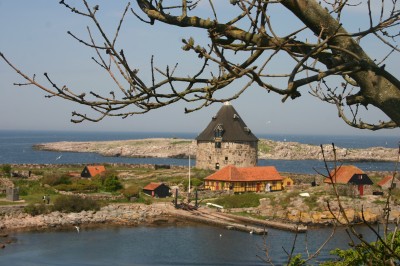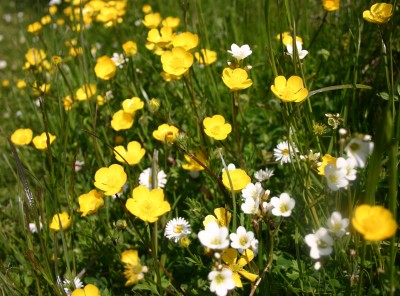Bornholm has a little brother – the island of Christiansø which has an even smaller brother called Frederiksø. These two tiny, even rockier islands, that are connected to each other by a small bridge, can be reached by ferry from Bornholm. I spend a whole wonderful day exploring the windswept isles that many seabirds use for nesting grounds and hanging out.
The islands are owned by the Ministry of Defence and the 100 people living here rent the houses from the ministry. Everything on the islands – including the flowers – is protected. Among the many flowers are quite a few species of orchid.
Around 1684 the Danish king chose to build a bastion on these islands because of their strategic location in relation to keeping an eye on the movements of the Swedish navy. Things were generally peaceful except for a skirmish with eight ships from the English navy. They had the upper hand for a while because the Danish cannons could not reach the British ships. Luckily for the Danes, the wind blew the ships closer to harbour and the cannons of Christiansø took revenge and the English finally turned tail. That’ll teach ‘em!
My visit is during the nesting time of various kinds of seagulls and eider ducks and I see lots of them sitting on their nests. I also see common guillemot and what looked to me like a little auk – round and stocky like a puffin but without the characteristic colourful beak.
Christiansø also houses an interesting frog genetics phenomenon that would be rather complicated to explain here. It involves pool frogs and marsh frogs, diploids (with two matching sets of chromosomes) and triploids (with an extra set of chromosomes). The bottom line is that female marsh frogs mate with male pool frogs and produce more or less exclusively female marsh frogs and male pool frogs, i.e. no male marsh frogs and no female pool frogs. Neat, eh? At any rate, both types of frogs are really cute.













